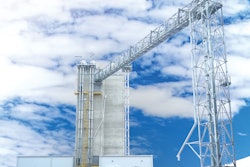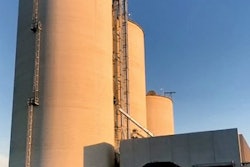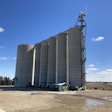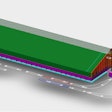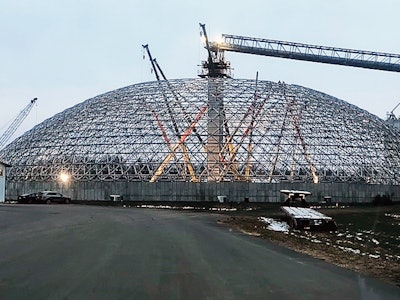
Every harvest season, a feature starts to appear across America’s rural landscape. Mountains of grain fill up bunkers and piles, waiting to be shipped the following spring. These temporary piles allow grain elevators to keep up with record-breaking harvests, but while the pile is being loaded and unloaded, it’s exposed to the elements. That is the situation that West Central Ag Services’ Beltrami, MN, location found itself in as a sudden fall storm came on before the site could finish covering its grain pile.
“Two years ago, we started to fill our pile on a Monday, knowing we could fill it in six days,” says Bryan Mueller, grain manager. “The weather was forecast to be great, but suddenly, it said we were going to get rain Friday evening.”
The company that installed the tarps came as employees rushed against the storm.
“With storm clouds 20 miles west of here, the tarp team and our crew were up on the pile and just managed to get it tarped,” said Mueller. “Because the bunker wasn’t full, the water ran down the walls into the grain, and it spoiled.”
Mueller and his team never got the six-day window they needed to fill and cover the co-op’s 2.5 million bushel ground pile. After that experience, Mueller started looking for an alternative to the ground pile they had without rearranging the co-op’s existing infrastructure.
“The problem was we had a bunker and we’d already invested into the infrastructure to fill it, and the pile sat in a footprint that was hard to change,” he explains.
“When we looked at putting a square building, we found we would have to change the scales’ location and how trucks flowed through our facility. That reality led us to figure out a way to create a more permanent structure over the top of our round bunker.”
One ofWest Central Ag Services’ board members had a solution that they had seen used by mines in Florida. A dome built byGeometrica, Inc.would be able to cover the same footprint and use all of the equipment installed for the ground pile.
“The other buildings that we looked at had pillars in them and obstructions you’d have to go around,” says Mueller. “The Agridomewas a free span, wide open and clear. The only thing we’d have is air tubes on the floor to move around when we’re taking grain out, making it very easy for payloaders and big equipment to operate and move around inside.”
Geometrica fabricates the complex steel web that forms the dome offsite and sends it to the location as hundreds of pieces that must be assembled on site.
VAA and Walt Johnson Construction were contracted to engineer and design the foundation the dome would sit on as well as build the dome once the parts were manufactured.
The dome is held down by its own weight, so the foundation had to handle more than 800,000 pounds of steel and contend with the area’s heavy snow and high wind speeds. It also had to be built quickly — West Central Ag Services’ wanted to have the structure ready for fall harvest.
Once the measurements were taken, the engineering complete, and the dome fabricated, Walt Johnson Construction, along with onsite Geometrica engineers, began construction.
New concrete was poured for the foundation, and a latticework of steel began to rise. It took 70 days to complete the dome, just in time for West Central Ag Services to fill it with 2.5 million bushels of wheat. So far, the new dome has made it through its first winter, easily withstanding 80 mph winds and heavy snow sliding right off of it.
Mueller has no regrets and believes the dome is an excellent option for facilities looking for something more permanent.
“The best thing about the dome is that it has removed some of the stress,” explains Mueller.
“The stress of having grain sitting outside, having grain go bad and having to get rid of rotten grain when the weather doesn’t cooperate — it’s just a lot less stress as a manager of the elevator.” ■
For more information on The Agridome,click here.

.jpg?auto=format%2Ccompress&crop=faces&fit=crop&h=48&q=70&w=48)





